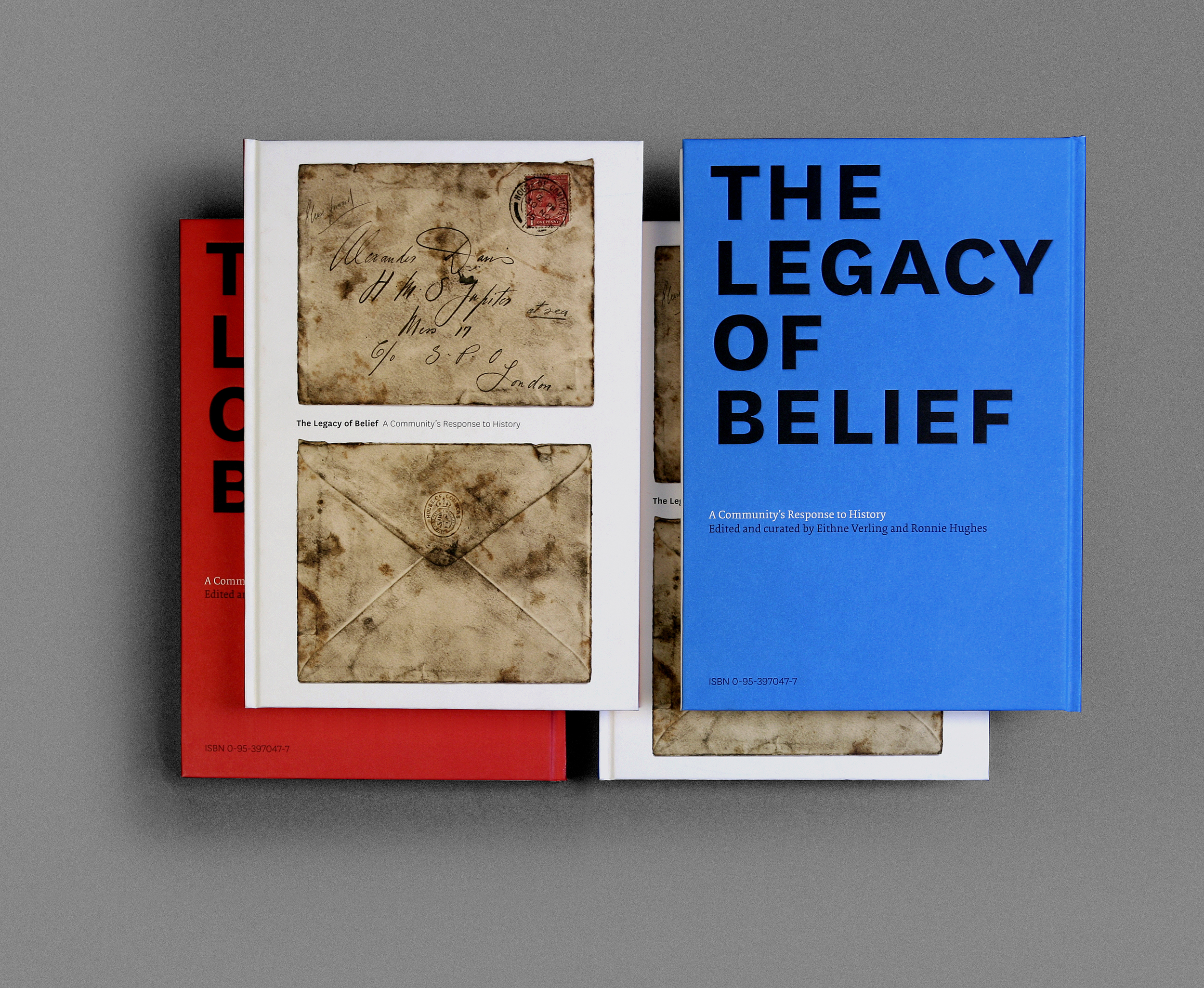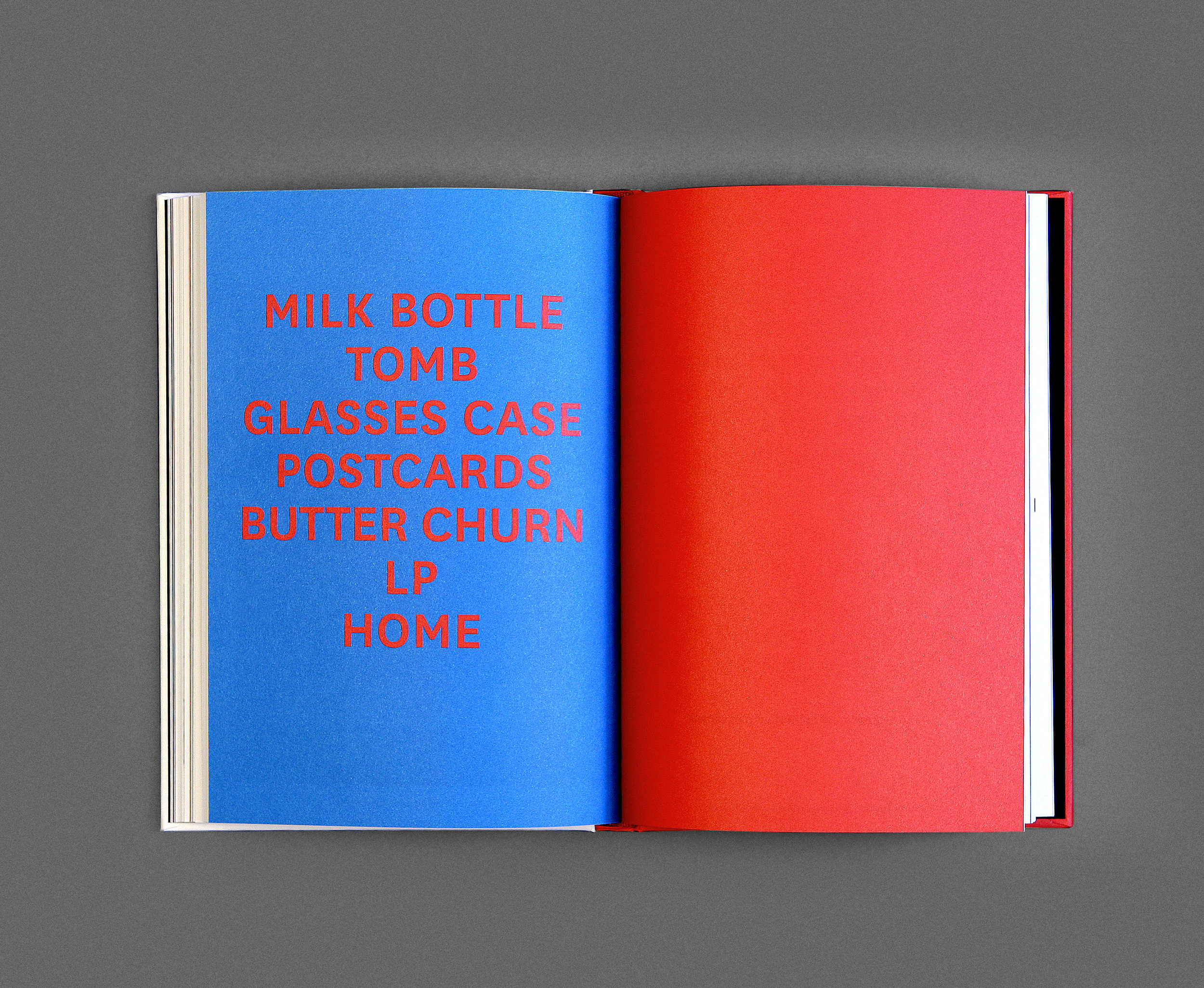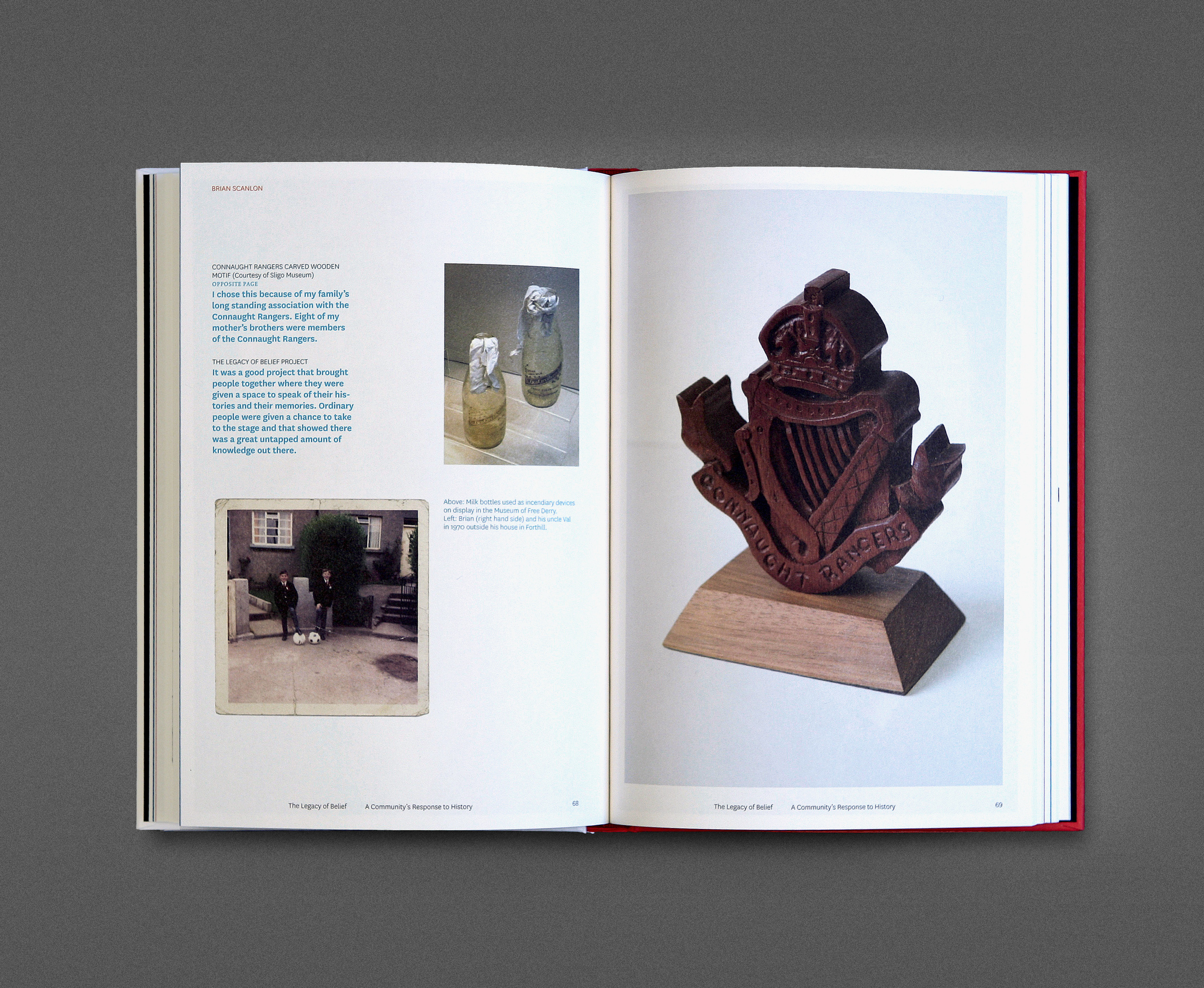The Legacy of Belief
The Legacy of Belief was a project initiated by Sligo Arts Services and promoted by The Partnership for Peace. Eithne Verling was the programme coordinator. Open to all sections of the local community it sought to examine ‘the effect of partition and the NI conflict on Sligo, the historical and contemporary implications of Sligo as a garrison town, the stories of those affected by sectarianism in Sligo, the influence and legacy of the Anglo-Irish in Sligo and attitudes to peace and multi-culturalism in Sligo today.’ 1.
There was an extended series of talks as well as visits to museums in Sligo, Belfast, Dublin and Derry. Ronnie Hughes was the project artist and worked to encourage contributions and involvement from the participants:
This involved stories, texts and the selection of objects or images that the participants felt represented their own specific history as well as an object from one of the museums they had visited. Ronnie Hughes documented all objects offered and selected as well as making photographic portraits of the contributors. All the collected material was then published in a book (designed by Atelier) curated and edited by Eithne Verling and Ronnie Hughes.
In addition the artist worked with the participants to propose a number of public artworks(two of which were realised) that took the form of large photographic works on key sites around ‘the hill’ in Sligo.
1. Rita Mc Nulty, The Legacy of Belief; A Community’s Response to History, Sligo, 2010, p15
Image of Sligo All Stars soccer team (precursors of Sligo Rovers) on former wall of the British Army Barracks at Barrack Street.
Image of ‘Hill’ matriarch Nancy Callaghan at Holborn Street.
Stephen Street proposal.





